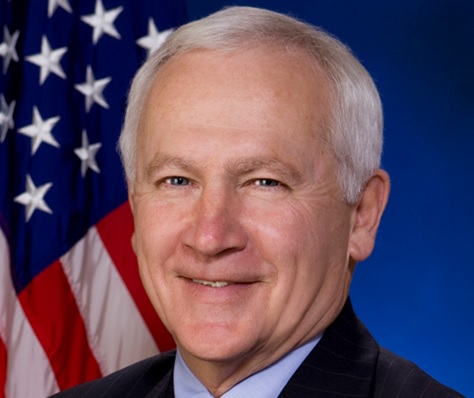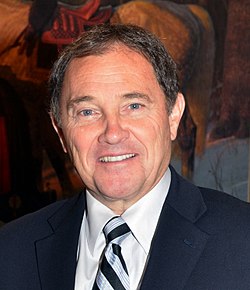It’s the 12 Days of Ballotpedia! Your gift powers the trusted, unbiased information voters need heading into 2026. Donate now!
Fact check: Do seven people a day die of a drug overdose in Pennsylvania?

June 23, 2016
By Karen Shanton
The death of music icon Prince in April from an accidental opioid overdose drew public attention to a national problem.[1] According to the U.S. Centers for Disease Control and Prevention (CDC), the United States is facing an "epidemic of drug overdose (poisoning) deaths."[2]
One state that has been affected by the epidemic is Pennsylvania. By the CDC’s count, Pennsylvania ranked third in the nation for total drug overdose deaths in 2014—just 12 behind the second-ranking state, Ohio.[2] And Pennsylvania's numbers have been climbing. Pennsylvania saw a 13 percent increase in drug overdose deaths from 2013 to 2014.[2][3]
| Drug Overdose Deaths by State, 2013 and 2014[4] | ||
|---|---|---|
| State | 2013 | 2014 |
| Alabama | 598 | 723 |
| Alaska | 105 | 124 |
| Arizona | 1,222 | 1,211 |
| Arkansas | 319 | 356 |
| California | 4,452 | 4,521 |
| Colorado | 846 | 899 |
| Connecticut | 582 | 623 |
| Delaware | 166 | 189 |
| District of Columbia | 102 | 96 |
| Florida | 2,474 | 2,634 |
| Georgia | 1,098 | 1,206 |
| Hawaii | 158 | 157 |
| Idaho | 207 | 212 |
| Illinois | 1,579 | 1,705 |
| Indiana | 1,064 | 1,172 |
| Iowa | 275 | 264 |
| Kansas | 331 | 332 |
| Kentucky | 1,019 | 1,077 |
| Louisiana | 809 | 777 |
| Maine | 174 | 216 |
| Maryland | 892 | 1,070 |
| Massachusetts | 1,081 | 1,289 |
| Michigan | 1,553 | 1,762 |
| Minnesota | 523 | 517 |
| Mississippi | 316 | 336 |
| Missouri | 1,025 | 1,067 |
| Montana | 137 | 125 |
| Nebraska | 117 | 125 |
| Nevada | 614 | 545 |
| New Hampshire | 203 | 334 |
| New Jersey | 1,294 | 1,253 |
| New Mexico | 458 | 547 |
| New York | 2,309 | 2,300 |
| North Carolina | 1,259 | 1,358 |
| North Dakota | 20 | 43 |
| Ohio | 2,347 | 2,744 |
| Oklahoma | 790 | 777 |
| Oregon | 455 | 522 |
| Pennsylvania | 2,426 | 2,732 |
| Rhode Island | 241 | 247 |
| South Carolina | 620 | 701 |
| South Dakota | 55 | 63 |
| Tennessee | 1,187 | 1,269 |
| Texas | 2,446 | 2,601 |
| Utah | 594 | 603 |
| Vermont | 93 | 83 |
| Virginia | 854 | 980 |
| Washington | 969 | 979 |
| West Virginia | 570 | 627 |
| Wisconsin | 856 | 853 |
| Wyoming | 98 | 109 |
At a recent public hearing, Pennsylvania Sen. Gene Yaw (R-Williamsport) offered an illustration of the problem in his state: “There’s seven people a day that die in Pennsylvania of a drug overdose, and that is probably [a] very conservative [estimate]. That’s more than traffic accidents in Pennsylvania.”[5]
Is Yaw correct that at least seven people die of drug overdoses in Pennsylvania on average each day? Do drug overdose deaths in the state outnumber deaths due to traffic accidents?
Yes. Yaw’s figures are for 2014, but the number of drug overdose deaths in Pennsylvania has only increased since then. State sources report that overdose deaths jumped from an average of about seven per day in 2014 to an average of nine per day in 2015, and that the numbers are expected to rise even higher in 2016.[6] That's more than twice the number of lives lost to traffic accidents.[7]
Background
Opioids, such as heroin and prescription painkillers, are the primary drivers of drug overdose deaths, both in Pennsylvania and in the nation as a whole.[2] Though heroin is perhaps the highest-profile drug in the class, legally-obtainable opioids like fentanyl and oxycodone also play a role in the crisis.
Westmoreland County, PA, Coroner Ken Bacha told the Pittsburgh Post-Gazette that about two-thirds of the overdoses in his county in 2013 involved prescription drugs.[8] “What we’re finding is the use of [prescription] pills is just increasing geometrically in all areas.” U.S. Attorney David Hickton added. “The data shows that most people are beginning their pill problem right out of the medicine cabinet.”[8]
Democratic Gov. Tom Wolf and state lawmakers have responded with a range of initiatives, from drop-off boxes for excess prescription medications to an expansion of access to naloxone, a drug that reverses the effects of opioid overdose, to legislation to strengthen prescription drug monitoring programs.[9][10][11]
One effort, which dates back to 2014, is a series of public hearings and reports by the Pennsylvania General Assembly's Center for Rural Pennsylvania. Yaw is the chair of the board of directors of the Center, which has held ten public hearings to pinpoint the causes of the epidemic and identify viable solutions.[12] He made his comments about the number of overdose deaths at the eighth of those hearings, on April 1.[5]
Drug overdose deaths in Pennsylvania
In an email to Ballotpedia, Yaw spokesman Nick Troutman cited a Pennsylvania State Coroners Association report as the source for Yaw's claim about overdose deaths.[13] The report, which is based on cause-of-death determinations by coroners and medical examiners in the period from January to December 2014, tallies 2,488 drug-related deaths for the year.[14] That works out to an average of seven per day.
And, as Yaw notes, that figure understates the actual current total.[5] For one thing, it doesn't capture all of the overdose deaths in 2014. The Pennsylvania State Coroners Association's count does not include numbers for 13 counties that did not supply data; the CDC, which collected 2014 overdose mortality data statewide, puts the 2014 total at 2,732, or an average of nearly 7.5 deaths per day.[14][2] It also “may not reflect all drug-related deaths for the time period, since there is lag time in getting toxicology reports and autopsy reports completed and not all drug-related deaths may have been reported to the Coroner or Medical Examiner.”[14]
Toxicology testing procedures also vary across jurisdictions, so a drug that is linked to deaths in one county may be missed in another. Speaking with state broadcaster WITF about the state’s heroin epidemic, Pennsylvania Department of Drug and Alcohol Programs Secretary Gary Tennis said, “We know that [the] quality [of overdose statistics] varies from county to county.”[15]
Furthermore, the number of overdose deaths has continued to rise since 2014. Troutman told Ballotpedia, “We are also told that the number of overdose deaths for 2015 will likely be significantly higher (possibly 20%) than 2014.”[13]
Susan Shanaman, attorney for the Pennsylvania State Coroners Association, confirmed that prediction in an email to Ballotpedia.[6] She told us that there were 3,300 drug overdose deaths in the state in 2015.[6] That figure, which includes data from all 67 counties, averages out to nine drug overdose deaths per day. And, Shanaman says, “It will increase again in 2016.”[6]
Traffic fatalities in Pennsylvania
The National Highway Traffic Safety Administration tracks traffic fatalities using information from a range of sources, from police accident reports to death certificates and coroner and medical examiner reports.[16] By its count, there were 1,195 traffic fatalities in Pennsylvania in 2014, for an average of three per day.[7]
Like drug overdose data, traffic fatality statistics may understate the total numbers. For example, the National Highway Traffic Safety Administration only includes in its statistics traffic accident-related deaths that occur within 30 days of the accident.[16]
Also, we can’t directly compare the most recent overdose and traffic fatality numbers because the National Highway Traffic Safety Administration has not yet released Pennsylvania's traffic fatality statistics for 2015.
However, the available data confirms Yaw’s claim. According to that data, drug overdose deaths outnumbered traffic fatalities by more than two to one in Pennsylvania in 2014.[14][7]
Conclusion
Pennsylvania Sen. Yaw says drug overdoses claim more lives in Pennsylvania than traffic accidents. On average, he claims, there are at least seven drug overdose deaths in the state each day.
We looked into it and found that Yaw’s claims are accurate. According to the Pennsylvania State Coroners Association, there were at least seven overdose deaths per day in Pennsylvania in 2014—more than double the number of traffic fatalities—and the number appears to be on the rise.
Launched in October 2015 and active through October 2018, Fact Check by Ballotpedia examined claims made by elected officials, political appointees, and political candidates at the federal, state, and local levels. We evaluated claims made by politicians of all backgrounds and affiliations, subjecting them to the same objective and neutral examination process. As of 2025, Ballotpedia staff periodically review these articles to revaluate and reaffirm our conclusions. Please email us with questions, comments, or concerns about these articles. To learn more about fact-checking, click here.
Sources and Notes
- ↑ CNN, "Prince Died of Accidental Overdose of Opioid Fentanyl, Medical Examiner Says," June 3, 2016
- ↑ 2.0 2.1 2.2 2.3 2.4 Centers for Disease Control and Prevention, "Increases in Drug and Opioid Overdose Deaths - United States, 2000-2014," January 1, 2016
- ↑ This is the change in total number of overdose deaths from 2013 to 2014. The CDC also reports changes in the age-adjusted rate of overdose deaths, which account for variations in the population from year to year.
- ↑ This table was compiled by Karen Shanton using data from the CDC.
- ↑ 5.0 5.1 5.2 The Courier Express, "Unique Perspectives Provided Friday at Hearing on Opioid & Heroin Addiction," April 4, 2016
- ↑ 6.0 6.1 6.2 6.3 Karen Shanton, "Email Correspondence with Pennsylvania State Coroners Association Attorney Susan Shanaman," June 22, 2016
- ↑ 7.0 7.1 7.2 National Highway Traffic Safety Administration, "2014 Traffic Fatalities by STATE and Percent Change from 2013 - State: USA," accessed June 22, 2016
- ↑ 8.0 8.1 Pittsburgh Post-Gazette, "Overdose Deaths from Prescription Drug Abuse Skyrocketing in Southwestern Pennsylvania," January 23, 2014
- ↑ Pennsylvania Department of Drug and Alcohol Programs, "Prescription Drug Take-Back Program," accessed June 22, 2016
- ↑ Governor Tom Wolf, "Gov. Wolf Announces Naloxone Standing Order to Combat Heroin Epidemic (+ FAQ's)," October 28, 2015
- ↑ The Center for Rural Pennsylvania, A Legislative Agency of the Pennsylvania General Assembly, "Heroin: Combating this Growing Epidemic in Pennsylvania," September 2014
- ↑ The Center for Rural Pennsylvania, A Legislative Agency of the Pennsylvania General Assembly, "Heroin and Opioid Addiction Public Hearings," accessed June 22, 2016
- ↑ 13.0 13.1 Karen Shanton, "Email Correspondence with Sen. Gene Yaw Communications Director Nick Troutman," June 22, 2016
- ↑ 14.0 14.1 14.2 14.3 Pennsylvania State Coroners Association, "Report on Pennsylvania Overdose Death Statistics 2014," accessed June 22, 2016
- ↑ WITF, "No Standard Exists in PA to Accurately Track Heroin Overdose Deaths," April 9, 2015
- ↑ 16.0 16.1 National Highway Traffic Safety Administration, "Fatality Analysis Reporting System (FARS), Analytical User's Manual, 1975-2014," November 2015
Contact
More from Fact Check by Ballotpedia
| Fact check/Are Gov. Herbert's claims about Utah's employment picture accurate? June 23, 2016 |
| Fact check/Would it be "totally illegal" for delegates pledged to Donald Trump to vote for another candidate at the Republican National Convention? June 17, 2016 |
| Fact Check/Is it true that Colorado House District 16 Candidate Larry Liston "claimed to be against Ref C... but voted for it"? June 17, 2016 |
Follow us on Facebook and Twitter







